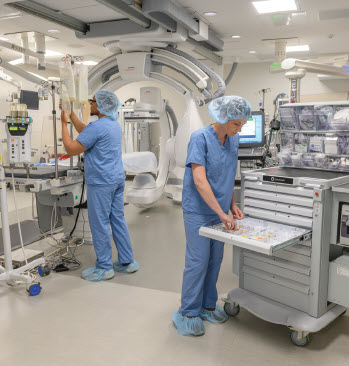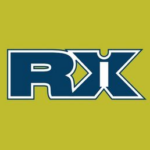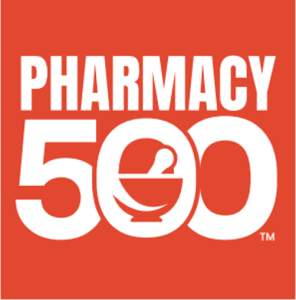How Automation is Helping Improve Care at Texas Children’s Hospital
By Gee Mathen, Director of Pharmacy Clinical Applications at Texas Children’s Hospital
Hospitals are under pressure to address one of the leading preventable causes of death in the U.S. — medication errors, which are estimated to result in an average of 250,000 preventable deaths each year. While any error involving medication is cause for concern, the consequences can be particularly severe in high-stakes environments like operating rooms (ORs), where even the smallest mistake can impact life or death.
Fortunately, technology enhancements in recent years have led to the advent of fit-for-purpose solutions for the OR, and automation is proving to be a viable solution to optimize medication management. By introducing automation into the OR, organizations can gain better visibility into medication inventory and eliminate routine manual tasks, helping to reduce opportunities for human error while ensuring the right medications are always on hand when needed. This ultimately helps improve clinical efficiency and patient safety. At Texas Children’s Hospital (TCH), the incorporation of automation is quickly helping to improve patient outcomes and the overall safety of the OR, serving as a blueprint for other hospitals looking to improve their medication processes.
Ensuring the Safety of the Medication Journey — End-to-End
Modern operating rooms are high-pressure environments where patient care is of the utmost importance, yet there is often little visibility into medication dispensing within the OR. Anesthesiologists typically own the medication distribution process in these settings and demand unfettered access to life-saving drugs during surgical procedures. This requirement has hindered adoption of automated dispensing cabinets (ADCs) and other automation technology in the OR because of the built-in safeguards that can often limit or delay medication dispensing. Instead, medications in surgical settings are still largely under human control and exposed to human error. There is often little enterprise insight into how much medication is used, wasted, or potentially diverted in the OR. Furthermore, human error in drug administration can increase the risk of patient harm.
While historically viewed by many anesthesiologists as a hindrance, TCH believes that automation — when thoughtfully incorporated — can help maintain autonomy and emergency access to medications while supporting improved patient and staff safety. Even with anesthesiologist oversight of drugs, the pharmacy is ultimately accountable for the safe, secure management of the medications in the OR. Integrating automation and barcode technology in operating room environments helps to reduce manual and administrative tasks. This allows anesthesia providers to focus on their patients, while giving pharmacy visibility into medication usage, better supporting inventory control, and regulatory compliance. Leveraging automation in the OR also improves accountability around controlled substances, which in turn helps reduce the time spent resolving stock discrepancies and investigating potential diversion.

Reinforcing Patient Safety at the Source
At TCH, we’ve taken steps to integrate medication management automation into the OR, and have streamlined processes, improved accountability, and ultimately, prevented harmful errors as a result.
When we started the process of upgrading our medication management technology, our priorities were clear — efficiency, visibility, and, above all, safety. We recognized the importance of engaging our anesthesia providers early in this process. Their frontline perspective was invaluable, and we collaborated closely to address any concerns. Throughout the decision-making and implementation phases, we had multiple training and testing sessions to ensure smooth integration and the selection of the optimal tool for our specific needs.
Working hand-in-hand with our anesthesia providers, we developed a technology strategy focused on medication management in the perioperative setting. This strategy had to work for everyone — it needed to support the pharmacy’s needs while also being easily adopted by our anesthesia staff. If they weren’t comfortable using the technology and processes, it wouldn’t matter how great it looked on paper.
Adopting new technology is never easy. You must prove that it’s reliable, that it actually solves the problem you’re trying to fix, and that it doesn’t create new problems. Additionally, everyone who interacts with these automated solutions needs to feel confident and equipped to use them successfully. For us, this meant building on our existing relationship with Omnicell. We were already using their XT Automated Dispensing Cabinets (ADCs) to dispense 1.3 million doses annually and leveraged the company’s XR2 robots to automate several aspects of our central pharmacy operation. Through this partnership, we were also introduced to Omnicell’s XT Anesthesia Workstation (AWS) — a medication dispensing cabinet designed to support the unique needs of surgical and perioperative settings designed to provide medication tracking and safeguards while ensuring a convenient medication workflow for anesthesiologists.
The AWS runs on the same server as our XT Automated Dispensing Cabinets and XR2 robots, ensuring that surgical settings are no longer a black hole when it comes to medication dispensing information. Data from these cabinets is captured and consolidated within an enterprise pharmacy intelligence solution, providing pharmacy leadership visibility and insight into medication utilization in the OR.
The intuitive anesthesia workflows provided through the workstation’s user interface reduces administrative tasks during surgical procedures while embedded barcode scanning automatically tracks medication utilization. Real-time dashboards help monitor and reconcile waste and an embedded syringe barcode label printer helps facilitate regulatory compliance.
Our use of the AWS has not only improved pharmacy’s visibility into how medications are being utilized in our ORs, it has also enabled our pharmacists to better serve our anesthesiologists. With improved inventory insight, our pharmacists can see the quantity of any drug in an AWS at any given time. Our technicians can see if a workstation is running low on certain medications and proactively restock these cabinets, ensuring critical medications are always readily available when needed. The built-in safeguards on the AWS are also helping us to improve patient safety by reducing manual tasks that increase the risk for human error
In an already strained labor force, incorporating tools that reduce administrative work while improving patient safety is key for sustainable success. Hospitals and health systems looking to streamline their operations with new technologies should consider adopting a strategy that supports patient safety throughout the medication use journey, including perioperative settings. Automating medication management processes gives clinicians valuable time back in their workday, allowing them to focus on clinical care and top of license practice, leading to improved job satisfaction and enhanced patient outcomes.








